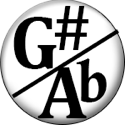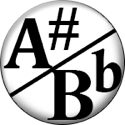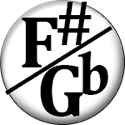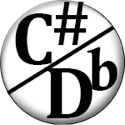Memorize the Notes on the Fretboard Using Octaves
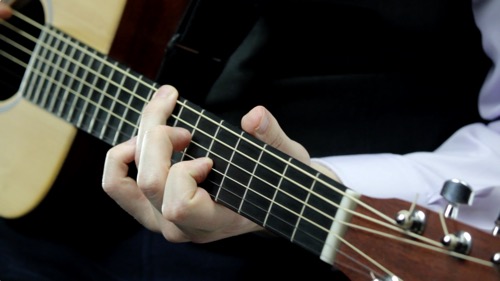
Hi. This is Hub Guitar.
Let's talk about how to memorize the notes on the guitar neck.
Why is this important? It's a step that few players ever make it to. One of the most common things we hear from players who have been trying to learn for years and years is that they felt frustrated that they could never learn all of the notes on the guitar neck.
But actually, it's not that hard to do. You just need a reliable method.
The first thing you should do is learn how to play and visualize all of the octaves. This is the most useful tool in your toolkit because when you're not sure what a note is, you can visualize the octave below, and the octave above. If you know what one of those notes are, then you know what the original note was, too.
The most basic one is the two octave shape. So we have an E and E here, make sense that this is an octave. So the same fret on the low E string is gonna be the same note as the same fret on the high E string, so here is 2C notes.
Next, we have more octaves on the low E string. First one is eighth fret of the fifth string, and fifth fret of the third string. Next one is eighth fret of the sixth string and tenth fret of the fifth string. This is pretty easy to remember. It's two strings down and two frets up. Now we're gonna move that C to the fifth string here, we are gonna do it again. The one that goes across two strings, that's actually the same as this one that we did back here. But it does look a little bit different and that's because we acrossed over the boundary of the B string. The B string is a little bit different than other notes. So whenever we cross over that boundary, our pattern is going to appear to change a little bit and it's gonna look like it shrank a little bit, but that's just because the B string is tuned bit different. Now we are gonna do octave from the C on the fourth string, so the first octave is this one, now you can see that this is actually the same pattern that we did here and here, but again, since we cross over the B string, we've got adjust our pattern up by one half step. That's the first octave and second one is this octave. So this octave is really pretty similar to this octave here. And we've got one more, we're gonna do the C on the fifth fret of the third string, and it's octave here like that.
So memorize that octaves and that will really be the first step that helps you link together all of the notes, understanding the guitar fretboard.
Overview
The task of learning every note on the fretboard seems daunting. Many guitar players defer this task out of laziness, but you can’t learn the guitar without learning the notes.
Rather than attempting to memorize all notes, a smarter goal is to start by learning methods for figuring out the notes.
Stage 1. Memorize names of open strings and the chromatic scaleA scale consisting of all 12 of the notes used in modern music..
Result: You can figure out any note by starting at the open string and counting up.
Stage 2. Using stage 1 method, memorize the notes on the sixth & fifth strings.
Result: You can figure out how to play most barre chords because their root will usually begin on the 6th or 5th string.
Stage 3. Learn all fingerings for octaves.
Result: Unknown notes can be “moved” to another octave that the player is familiar with, creating a method of quickly retrieving any note’s name.
Stage 4. Remove the scaffolding.
Result: When you no longer depend on these methods to recall the names of notes, that means that all notes are memorized.
REMEMBER: the more methods you have available to figure out a note’s name, the faster you’ll find yourself memorizing all of them.
This lesson deals with the use of octaves to quickly identify the names of notes by comparing those notes to other notes that are already memorized.
Two-Octaves
Octave between low E and high E string
The first octave is familiar: any fret on the low E string will share the same note as the fret on the high E string.
Octaves From the Low E String
The next two octaves are similar. First, the octave above a note on the low E string will be two frets higher and two strings higher. Thus, once the E string is learned, the names of the notes on the fourth string can be easily visualized.
In addition, the same octave can be found on the third string, but three frets lower.
Octaves from the Fifth String
The fifth string octaves look very similar to the sixth-string octave:
The octave from the fifth string to the third string is the same shape as the one found before—two frets higher, two strings higher.
The octave with the 2nd string and the 5th string looks slightly different. Now that we’ve crossed over into the B string’s territory, our intervals have to be made larger by one fret to retain the original value. This is because the B string is “offset” by one fret when compared to the other strings.
Octaves from the Fourth String
The octave from notes on the fourth string looks similar to other octaves we’ve encountered before, except this time it appears to be one fret larger usual. That’s because we have stepped onto the “B” string and need to adjust up by one fret to compensate for the lost half step.
Octaves from the Third String
This octave is the same octave we’ve seen on all of the other string pairs, but like the previous one, it is elongated by one half step to compensate for the missing half step going from the G string to the B string. Remember: if your first note is underneath the B string, and your higher note interval steps onto or above the B string, you’ve “lost” a half step and must adjust by making the interval a half step larger.
Coda
Learning the octaves on the guitar is very important and will give you the first tool you need to learn all of the notes on the guitar.
Key Tasks
- Pick a single note and locate all of its octaves.
- Try using the octaves melodically; play your favorite melody using both octaves together.
- For more fretboard memorization, see the next lesson on fretboard memorization.
 As the creator of Hub Guitar, Grey has compiled hundreds of guitar lessons, written several books, and filmed hundreds of video lessons. He teaches private lessons in his Boston studio, as well as via video chat through TakeLessons.
As the creator of Hub Guitar, Grey has compiled hundreds of guitar lessons, written several books, and filmed hundreds of video lessons. He teaches private lessons in his Boston studio, as well as via video chat through TakeLessons.




